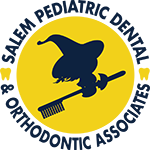
Your Child’s Sippy Cup: Is it a Friend or Foe?
Shaped like your child’s favorite action heroes and in every vibrant color imaginable, sippy cups seem like an innocent way to prevent spills. But with increased cavities and speech issues abound, pediatric dentists have recent research suggesting that what was once a friend is now a foe.
Of course, sippy cups can play an integral role in your child’s development. But in light of these recent developments, it’s important to know how to properly use them and to be aware of potential problems that can occur due to misuse.
How are Sippy Cups Supposed to be Used?
Sippy cups are a parent’s dream. After all, they allow children to take care of themselves and transition to adult cups easier than they would otherwise be able to. However, sippy cups weren’t developed or intended for prolonged use, no matter the level of convenience they offer.
In fact, sippy cups should be used as a transitional tool to wean children off of bottles until they’re able to use an adult cup. Most often, this means that sippy cup usage should stop between the ages of one and two, depending upon a child’s motor development.
Common Health Concerns Associated With Sippy Cups
Many parents understand that sippy cups can be problematic when used improperly, but not as many recognize the primary health concerns that can surface due to improper use:
- Tooth Decay – Sugary substances in your child’s sippy cup will feed the oral bacteria in his/her mouth, thereby weakening the enamel and causing decay.
- Speech Difficulties – Sippy cups can cause speech issues. This can happen when a child drinks from a cup as if it were a bottle, misplacing the tongue and pushing out the teeth, which can result in a lisp or other articulation complications.
Turning a Common Foe Back Into a Friend
A quick online search will turn up dozens of articles telling you that sippy cups are an absolute foe, but it isn’t that simple. While it’s true that sippy cups can cause problems, proper usage makes them a friend and asset as you transition your child into adult cups.
So, how can you turn this foe into a friend once again? Here are a few suggestions:
- Choose the Right Sippy Cup – Not all sippy cups are created equal. Try to purchase ones that have a spout and two handles to promote motor development. As your child ages, you may even want to purchase a sippy cup with a straw rather than a spout. Also, if you’re using a sippy cup for juice, it’s beneficial to avoid “no-spill valves” as valves can concentrate sugary fluid on your child’s teeth over a longer period of time.
- Limit Time With the Sippy Cup – Some kids will run around all day with their cups if you let them! Instead, take the cup away when your child is finished.
- Offer Juice Only at Mealtimes – If you want to offer juice to your child, do so at mealtimes only. Increased saliva production will help break down the sugars and rinse them away to prevent tooth decay.
- Minimize Sugary Liquids – Instead of juice, opt for water during the day and at bedtime.
Friend or Foe: You Decide
A sippy cup can be your best friend or worst enemy: it all depends on how you use it.
By keeping the tips above in mind, your little one can enjoy his/her favorite sippy cups and you can rest assured that his/her teeth and development won’t be derailed in the process.
Sources:
Davis, J. (2002, May 22). Sippy Cups Causing Too Many Cavities. Retrieved June 2, 2015 from http://www.webmd.com/baby/news/20020322/sippy-cups-causing-too-many-cavities
Mann, D. (2008, February 11). So Long Sippy Cups, Hello Straws. Retrieved June 2, 2015 from http://www.webmd.com/children/news/20080212/so-long-sippy-cups-hello-straws
Share
JAN
2020


About the Author:
Since 1972, Salem Pediatric Dental & Orthodontic Associates has provided comprehensive preventive and therapeutic oral health care for infants and children through adolescence including those with special health care needs. We proudly serve the communities of Salem, Lynn, Peabody, Danvers, Marblehead, Swampscott, Beverly, and many more.